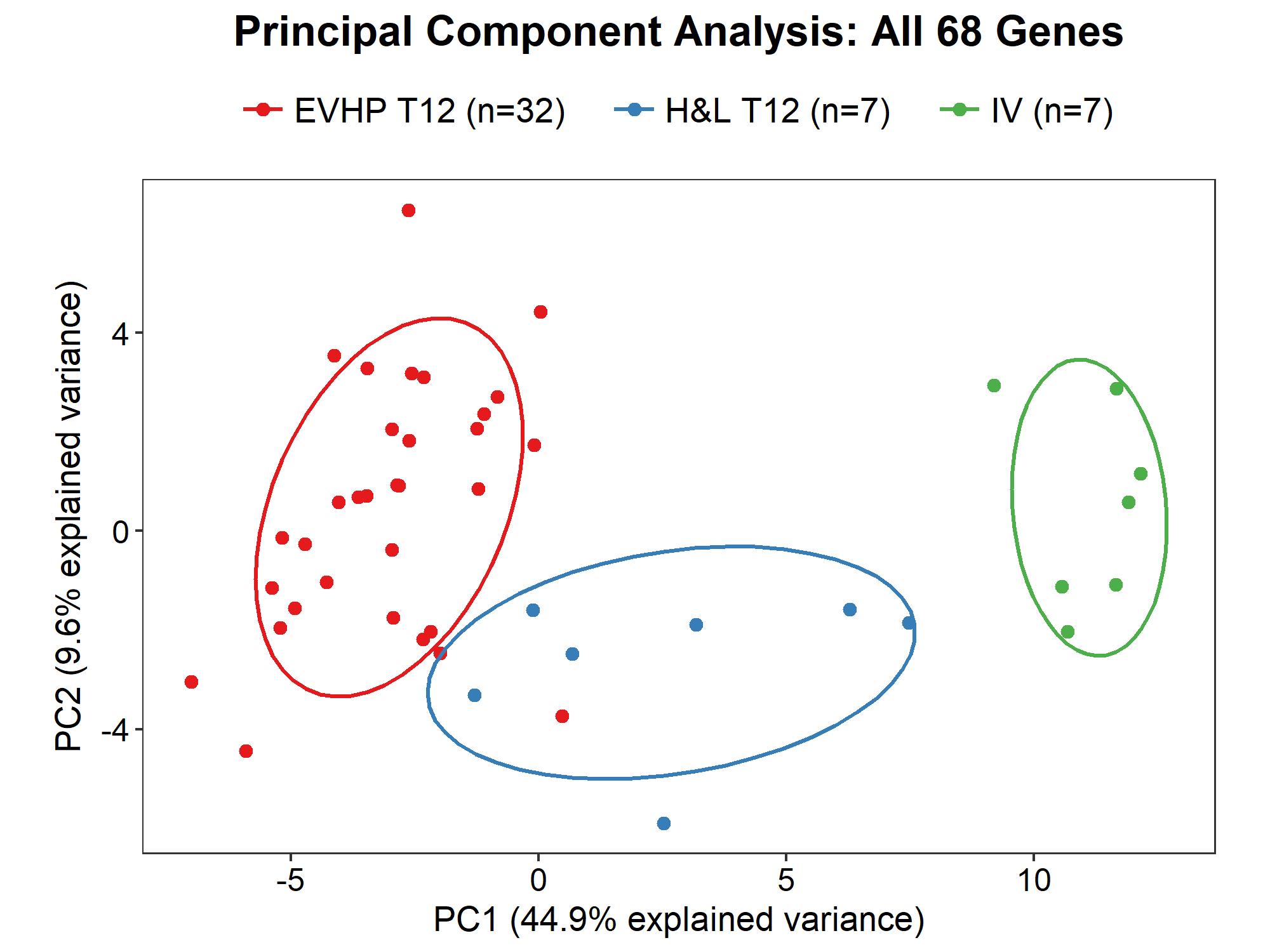Correlation between Gene Expression and Cardiac Function in Ex Vivo Perfused Porcine Hearts
University of Alberta, Edmonton, AB, Canada
Meeting: 2019 American Transplant Congress
Abstract number: D258
Keywords: Gene expression, Heart preservation, Machine preservation, Pig
Session Information
Session Name: Poster Session D: Non-Organ Specific:Organ Preservation/Ischemia Reperfusion Injury
Session Type: Poster Session
Date: Tuesday, June 4, 2019
Session Time: 6:00pm-7:00pm
 Presentation Time: 6:00pm-7:00pm
Presentation Time: 6:00pm-7:00pm
Location: Hall C & D
*Purpose: Cardiac transplantation is a life-saving intervention for advanced heart failure but it is limited by a shortage of suitable donor organs. Ex vivo heart perfusion (EVHP) represents a promising alternative for organ preservation and repair. We aimed to assess the utility of gene expression for better understanding and monitoring cardiac injury and repair during EVHP.
*Methods: Biopsies were obtained from 46 porcine hearts either in vivo (IV, n=7) or after 12 hours of ex vivo heart (EVHP, n=32) or combined heart-liver (H+L, n=7) perfusion. Functional parameters were recorded during EVHP. Histology was assessed for features of cardiac injury. NanoString was used to measure 68 genes previously associated with cardiac injury and repair. Molecular data were assessed for differential expression and correlated with function and histology.
*Results: Principal component analysis demonstrated distinct clustering of sample groups based on gene expression patterns (Figure 1). 44 genes were significantly upregulated and 12 genes were significantly downregulated in EVHP vs. IV (FDR<0.05). As aggregate gene sets, the upregulated and downregulated genes exhibited higher and lower expression, respectively, in EVHP vs. IV, EVHP vs. H+L, and H+L vs. IV (p<0.001) (Figure 2). Gene set expression correlated with various functional parameters (Table 1) but not with histology.
*Conclusions: These data suggest that EVHP induces a molecular injury response that correlates with function. Interestingly, molecular injury appears reduced in combined heart-liver perfusion. This represents a novel approach for assessing the mechanism and extent of organ injury during EVHP.
| Upregulated 44-gene set | Downregulated 12-gene set | |||
| Functional parameter | r-value | p-value | r-value | p-value |
| Arterial lactate (mmol/L) | 0.640 | <0.001 | -0.549 | <0.001 |
| dP/dtmin (mmHg/s) | 0.481 | 0.006 | -0.241 | 0.190 |
| dP/dtmax (mmHg/s) | -0.382 | 0.030 | 0.174 | 0.341 |
| Oxygen extraction (%) | -0.612 | <0.001 | 0.434 | 0.011 |
| Cardiac output (L/min) | -0.523 | 0.002 | 0.087 | 0.630 |
| Stroke work (mmHg·ml) | -0.623 | <0.001 | 0.250 | 0.167 |
To cite this abstract in AMA style:
Rotich S, Herbers N, Hatami S, Nagendran J, Mengel M, Freed D, Adam B. Correlation between Gene Expression and Cardiac Function in Ex Vivo Perfused Porcine Hearts [abstract]. Am J Transplant. 2019; 19 (suppl 3). https://atcmeetingabstracts.com/abstract/correlation-between-gene-expression-and-cardiac-function-in-ex-vivo-perfused-porcine-hearts/. Accessed December 17, 2025.« Back to 2019 American Transplant Congress


